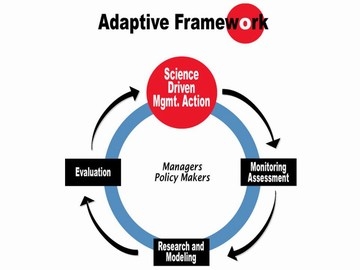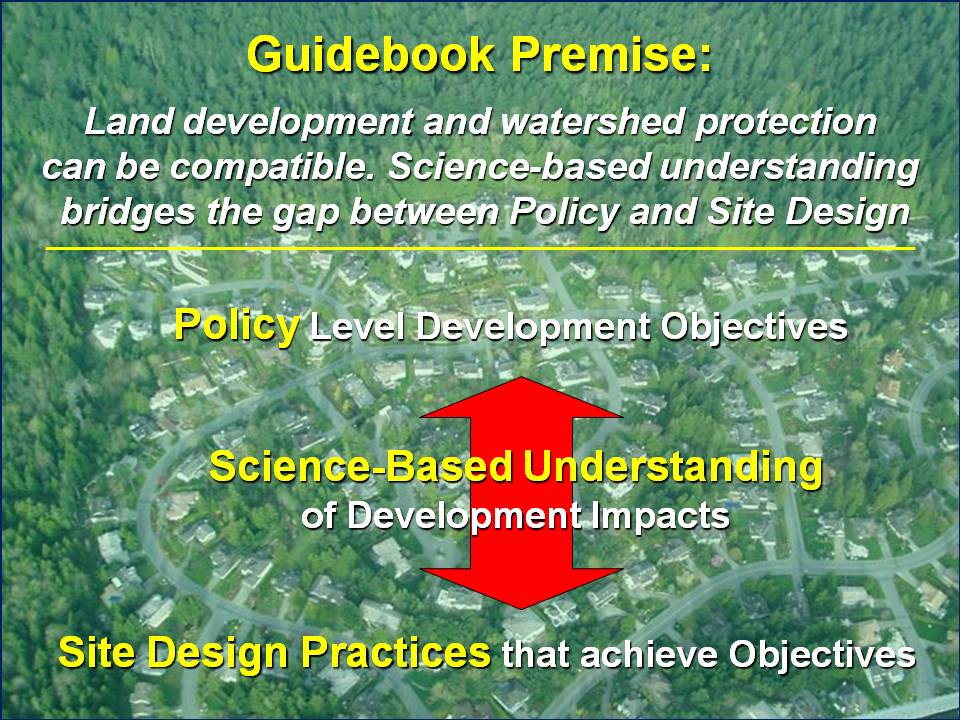Protect Watershed Health: "Adaptive Management means we change direction when the science leads us to a better way," says Jim Dumont
Note to Reader:
At the second seminar in the 2011 Comox Valley Series, the spotlight was on urban watershed protection and restoration issues, with emphasis on a ‘design with nature’ approach to green infrastructure that integrates rainwater management and drought management. Connecting the dots between watershed health and infrastructure type is emerging as an important piece in ‘sustainable drainage infrastructure’, both fiscally and ecologically.
In the morning session, Jim Dumont presented a short course onf rainwater management in a watershed context. This set the stage for Northeast Comox as a real-world example in the afternoon.
After the seminar, participants were invited to share their “Ah-Ha moments” so that there would be a record of individual learning outcomes. After reflecting on what heard during the day, Jim Dumont provided the musings below.
Leading and Implementing Change
“As I reflect on the town-hall sharing at Seminar #2, I have several thoughts wandering through my mind. The chief one is related to people wanting to implement regulations and bylaws,” states Jim Dumont.
“We observed many well-meaning people, all of whom want to be informed and to influence society in a positive way. The intent and the drive are all focussed upon solving identified problems and creating a better world for future generations.”
Adaptive Management Means ‘Learn by Doing’
“We also observed people who had a positive learning experience because new information was shared, and they found the information enlightening. This simple observation leads me to conclude that the information is still flowing to the concerned citizenry; and the final answers are still out there waiting to be discovered.”
“This further emphasizes the need for an approach to life and our endeavours that includes something as simple as CHANGE; or to use the technical term that describes the concept: Adaptive Management. This approach is also described as learning by doing. In rainwater management and watershed protection, it means we change direction when the science leads us to a better way.”
“This way-of-thinking should obviously be part of our outlook and professional approach; and it is one we need to embrace as an essential part of our personal and professional lives. This then leads me to the second part of my observation, and that is: There is a desire by some to codify in bylaw the future actions regarding the built environment within an urban setting.”
Is a Bylaw the Appropriate Tool for Watershed Protection?
“After experiencing how difficult it is to alter a bylaw once it is in place, and considering that we do not have the final and complete answers for protecting watershed health, I am convinced that there must be a different approach to regulating our influences on the natural environment.”
“While a bylaw may be seen as a reasonable first step in altering our impacts on watershed health, the need to build in change is not often accounted for in a bylaw. This means we could then be faced with a continuing saga where the current bylaws are not correct. Yet we are seeking to change and evolve policies and practices so that we develop land and build communities in a way that respects nature.”
“Doesn’t this sounds a lot like our current situation where we are now trying to change out-dated bylaws? For this reason, I would urge caution and suggest we modify the process rather than imposing another set of bylaws that will prove to be incorrect within a matter of years.”
It is Easier to Modify a Process Than a Bylaw
“We can modify processes much more easily than bylaws.This is an approach adopted by the City of Surrey. The ‘Development Agreement’ between the City and the Developer is the vehicle of change. Through this mechanism, developers agree to new methods. They are part of the process, and without having to be burdened with yet another bylaw that may very well become out-dated in the near future,” concludes Jim Dumont.
To Learn More:
Click on Rainwater Management in a Watershed Context: Do More With Less & Achieve Stream Health Benefits (1.6MB PDF) by Jim Dumont — Natural landscape-based assets reduce runoff volumes, have lower life-cycle costs, decrease stresses applied to creeks, and enhance urban liveability.
For additional context regarding protection of stream health and reduction of infrastructure liability, the reader is referred to Green Infrastructure: Achieve More With Less, published in Construction Business Magazine in February 2011.
About Adaptive Management
Published in 2002, Stormwater Planning: A Guidebook for British Columbia was a catalyst for change that has resulted in British Columbia achieving international recognition as a leader in implementing a natural systems approach to rainwater management.
The Guidebook’s premise that land development and watershed protection can be compatible represented a radical shift in thinking in 2002. The Guidebook recognized that water volume is something over which local government has control through its infrastructure policies, practices and standards.
The Guidebook was also a pioneer application in North America of ‘adaptive management’ in a rainwater management setting. In the Guidebook, adaptive management means: We change direction when the science leads us to a better way.
Click on this link to The Adaptive Management Approach to download an illustrative graphic from the Guidebook.
The Goal
The goal of adaptive management is to learn from experience and constantly improve land development and rainwater management practices over time. This requires ongoing monitoring of projects to assess progress towards performance targets and the shared watershed vision.
Posted May 2011




